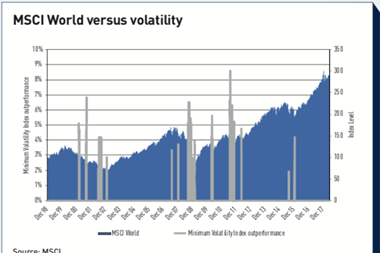Portfolio management experts debated ideas around contemporary asset management practices at a pensions conference in Copenhagen, with one CIO arguing against the contention that the current investment environment was any more uncertain than earlier phases.
In the panel discussion at the IPE Conference and Awards, moderator Joseph Mariathasan put forward an audience question on the claim that we are increasingly living in a world of radical uncertainty where many problems cannot be modelled by statistics.
Chris Brightman, chief investment officer of Research Affiliates, said: “I reject the idea that we’re any more uncertain now than ever.”
In his first job, Brightman recalled his boss counselling him to reject the temptation to start monthly commentaries by saying that now was a particularly difficult time to make a forecast or make an investment decision.
“Never in my career at any time has it ever seemed like it wasn’t a particularly difficult and uncertain period,” he said.
Fiona Frick, chief executive officer of Unigestion, said her firm had an answer to this.
“What we’ve said is that we don’t want to forecast,” she said.
“In the end we don’t know where the economy will be in one year or two years and I think central banks don’t know that either. So for a multi-asset portfolio what we try to do is to ‘nowcast’,” she said.
However, even this, she said, was quite complex because commentators disagreed on exactly where the economy was in the cycle.
“What we try is to define exactly where we are today in the macrocycle and twist our ideas towards these views, because one of the flaws of Markowitz is that in order to believe in this diversification you have a very long timeframe,” she said.
The starting point for the discussion had been a video interview between Harry Markowitz, the winner of the 1990 Nobel Prize for Economics for his influential Modern Portfolio Theory, conducted by Mariathasan and Yves Choueifaty, president and CIO of TOBAM.
Frick said what her firm had done – and what a lot of academics were working on – was harnessing the power of nowcasting, and understanding that different market environments and macroeconomic environments corresponded differently to risk factors that performed better or worse.
“I think that is a very interesting area of development,” she said.
Responding to the question of whether passive or active investment methods were better for public pension funds, Choueifaty took issue with the idea of comparing in retrospect whether an actively-managed pension fund would have outperformed had it instead allocated to a passive strategy.
“I think it is a comparison you cannot do, because if you are asking this active manager to modify the past – and this would have had an impact also on the prices,” he said.
Bright agreed, saying he had once heard Norges Bank compared favourably at a symposium to US pension fund CalPERS, for having made the retrospectively successful move of rebalancing its portfolio in 2008, whereas CalPERS was said to have chosen not to rebalance at that point.
“You can’t compare CalPERS, which has a huge amount of liabilities and is making pension payments and outflows all the time and has no ability to get any money into the portfolio, to the Norges Bank portfolio that is buying future equities all the time,” he concluded.









No comments yet